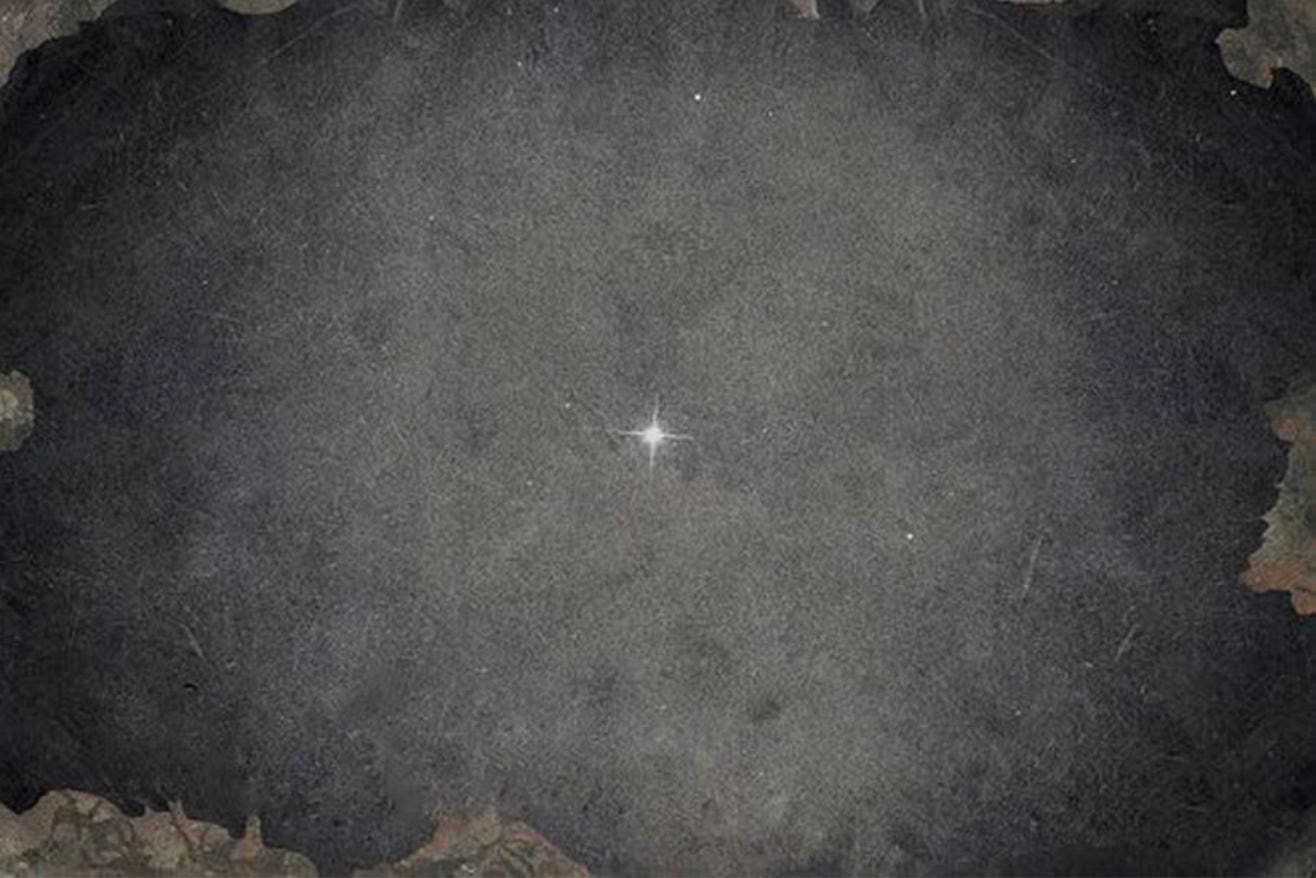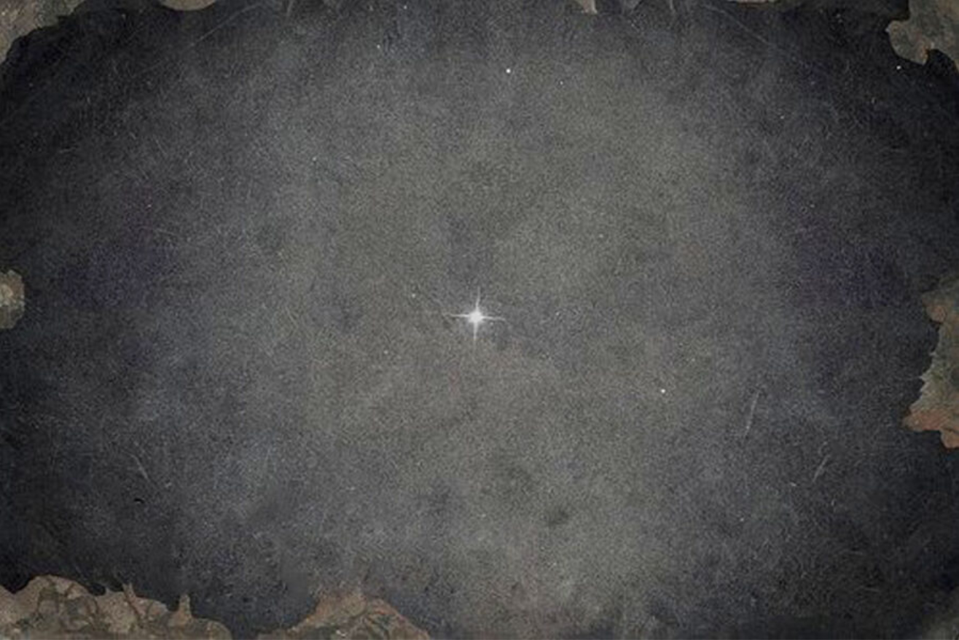An astronomer and a photographer captured the first photograph of star 175 years ago on July 17, 1850.
This image of Vega in the sky over Harvard is the first known photograph of a star other than our … More
Today, high-tech cameras attached to powerful telescopes can show us individual planets orbiting distant stars, stars falling into black holes in distant galaxies, and galaxies coalescing in the distant, early universe. Just 175 years ago, however, most astronomers still thought our galaxy was the only one, and no one had even seen a real photo of a star. And then it all changed: one grainy image would become the basis of a collection of astronomical images that would reveal the distance to other galaxies and the chemical makeup of our Sun.
In the late 1800s, a group of women called the Harvard Computers cataloged and analyzed all the data from the Harvard College Observatory’s telescopes. Many of these women were extremely qualified astronomers in their own right, but the Observatory refused to allow them to use its telescopes to make their own observations. But while they spent their days analyzing stacks and stacks of data for the Observatory’s male astronomers, they also used it to make their own discoveries – some of which laid the foundation for modern astronomy.
And the massive collection of photographic plates the Harvard Computers used in their work began with a July 17, 1850 daguerreotype of the star Vega.
The Astronomical Paparazzi
On a warm summer night in Massachusetts, astronomer William Bond carefully pointed the Harvard College Observatory’s 15-meter refracting telescope – called the Great Refractor – at the constellation Lyra, zeroing in on a bright star called Vega. Photographer John Adams Whipple carefully slid a chemically-treated metal plate into position at the viewing end of the telescope. And then, for twenty long minutes, they waited.
Modern telescopes use charge-coupled devices, or CCDs, to make detailed, high-resolution images of space. A CCD is covered with rows and columns of capacitors (devices that store electrical charges). Each capacitor represents a pixel in the final image, and the amount of light that falls on each pixel determines how bright it is. The more pixels an image contains, the more detailed the image will be. That’s how modern telescopes can reveal stars like Vega in enough detail to compare the temperature at its poles with the temperature at its equator (spoiler alert: Vega is hottest at the poles, because it spins so fast that its equator bulges outward a bit, which has a weird effect on how heat moves through its outer layers.)
Daguerreotypes took a lot more preparation and patience – and produced much lower-resolution images. Whipple or one of his assistance had to polish a silver-plated sheet of copper to a mirror-like shine, then coat it with iodine gas (without smudging it). When light hit the iodine-treated silver, chemical reactions would leave patterns of light and dark on the plate. But it took several minutes for the plate to absorb enough light to produce a decent image, and several more minutes of work (with toxic chemicals!) to make the image visible.
Readers of a certain generation might remember shaking Polaroid pictures to develop them; the principle behind developing a daguerreotype was similar, except it involved sticking the plate in a box full of mercury fumes for several minutes. The mercury triggered the reactions that made the image visible on the chemically-treated plate.
“The anticipation they must have felt watching the image develop over the hot mercury fumes must have been just as intense as our wait for the first photos to download from the James Webb Space Telescope,” wrote Sky & Telescope’s Bob King. (One hopes they were holding their breaths in anticipation, because at least then they wouldn’t be inhaling mercury.)
That’s a good comparison; while astronomers today have to wait for computers to download their data and specially-programmed software to process it into something usable, Whipple and Bond had to wait for their daguerreotype plates to develop.
Shedding More Light on the Stars
The Mid-InfraRed Instrument (MIRI) captured this image of the debris disk around Vega.
175 years later, technology has advanced so far that we can measure how quickly Vega spins on its axis (once every 12.5 hours) and even see a disk of dusty debris surrounding Vega like a fuzzy halo. Astronomers speculate that some of the disk might be the remains of a pair of Pluto-sized dwarf planets that collided sometime in the last million years.
Vega is one of the brightest stars in the night sky; from the Northern Hemisphere, it’s second only to Arcturus. It’s twice as massive as our Sun and 40 times more luminous – and it only has about 500 million more years to live before it runs out of hydrogen at its core and stars fusing helium, causing its outer layers to expand outward, swallowing up any planets in their way. (Perhaps ironically, this is the current state of Arcturus, Vega’s rival for the title of brightest star in the northern sky.)
Our Sun will eventually meet the same fate, in about 5 billion years; because Vega burns hotter, it’s doomed to die much sooner. Good thing we have a picture.









